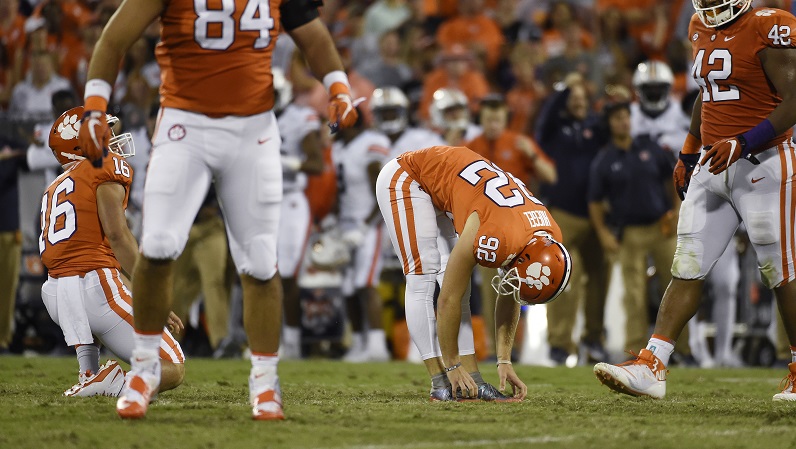At the ACC Media Days in Charlotte, the league’s Supervisor of Football Officials, Dennis Hennigan, went into detail about a variety of scenarios involving the new kickoff rules in college football.
“The rule this year is going to be if a member of the receiving team fair catches a kickoff inside his 25 yard line, they will next snap the ball at the 25 yard line,” Hennigan explained.
“Whenever a player on a receiving team, whether it’s a punt or kickoff, if any player signals for a fair catch, the effect of that is that the receiving team is giving up the ability to return the ball. You can’t return it. It will be your ball at the spot where the ball is caught.”
What are three of the specific things fans can expect to see with the new rules?
More touchbacks and fewer kickoff returns
The whole idea behind the new kickoff rule is to create fewer returns on the behalf of specialists taking the kicks. Which means the days of kickers trying to intentionally drop kickoffs inside the 10-yard-line along the sidelines could rapidly become a thing of the past.
Now that returners can fair catch those kickoffs that aren’t quite in the end zone, but would potentially pin them way back without a solid return, expect to see many more touchbacks.
“This is obviously an attempt by the Rules Committee to reduce the number of kickoff returns,” Hennigan said.
Fewer major penalties
From the officials’ perspective, there is optimism that fewer live kickoff returns will result in fewer significant penalties. These include blocks in the back, late hits, unnecessary roughness, and illegal hits along the sidelines.
“I think the data shows that — not that there’s more fouls on kickoffs than other plays. But that there are more significant fouls, if you will, on kickoffs than on other plays,” Hennigan said. “So the Rules Committee thought, ‘Let’s take this one step this year, see what the data shows at the end of the year and then decide what, if any, additional changes will be made.’”
Quicker first down plays after kickoffs
Another motivation for the rule change, aside of reducing kickoffs and subsequent penalties and injuries, is to speed up the start of offensive drives.
“What we are trying to do is eliminate that dead time where the teams are standing on the sideline and playing a cat and mouse game of who is going to come on first,” Hennigan said.
As Hennigan explained, at the end of a kickoff, the play clock operator is going to start the 40-second play clock just as they would at the end of any other play.
“In the past, the kickoff would end, we would spot the ball, the officials would stand there and hopefully the teams would be coming out and the referee would blow his whistle and start the 40-second play clock,” Hennigan said. “Now, kickoff ends, the play clock operator will wait a beat or two, and then he or she will start the 40-second play clock.”
By starting the play clock immediately, it will force offenses to take the field more quickly and get their drives started. Teams will face the risk of a delay of game penalty if they try to wait until the defense takes the field and make last-second adjustments to the lineup. That’s because the officials will delay the snap to give the defenses time to match up.
“The same substitution rules apply,” Hennigan said. “The defense has to be given an opportunity to match up. So as that play clock is running, if the offense decides they’re going to stand on the sideline, until there is 10 seconds on the play clock, they come out and get over the ball, what you will see is an official come up and stand over the ball and give the defense an opportunity to respond, to get the personnel out there that they want out there. So you could have a delay of game penalty on the offense. Again, that play clock will start after the end of a kickoff.”

















